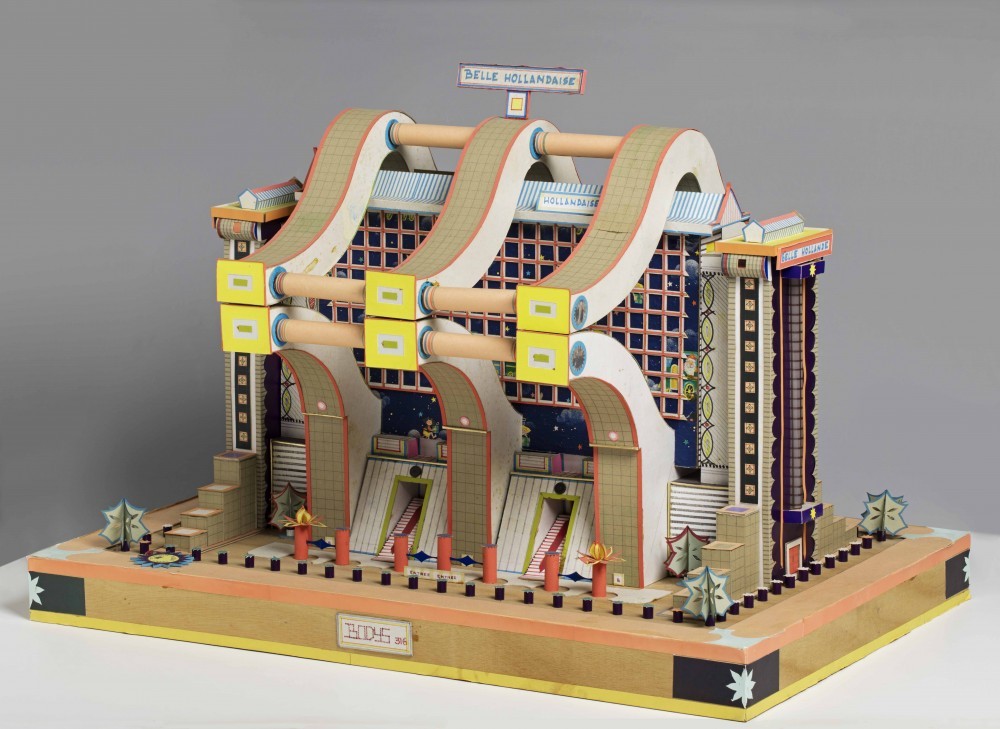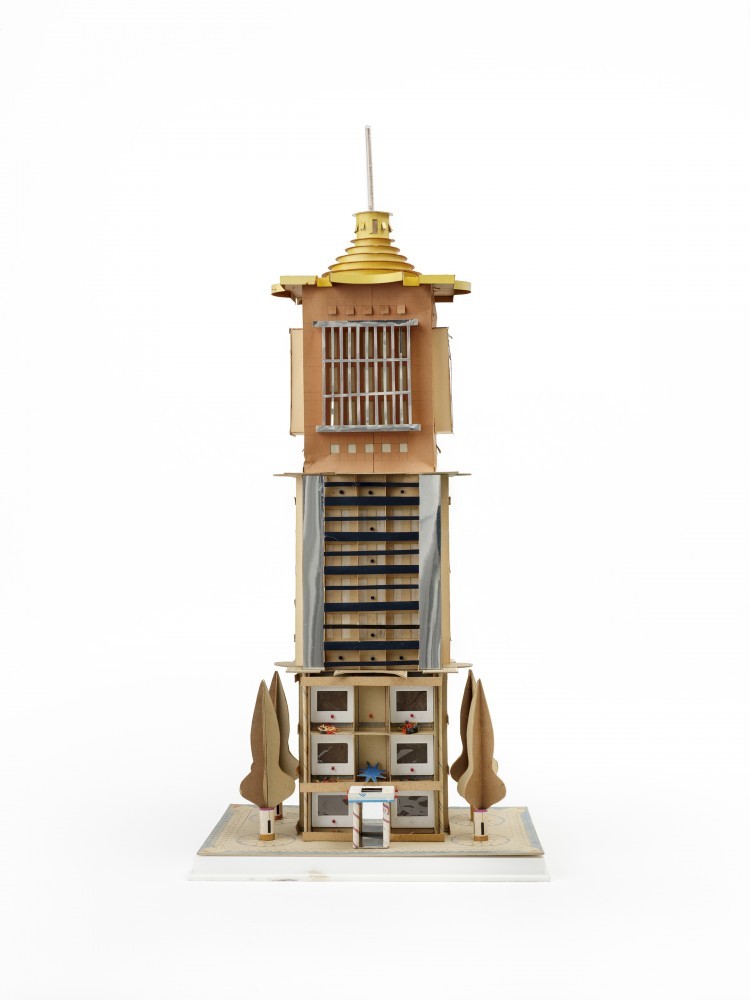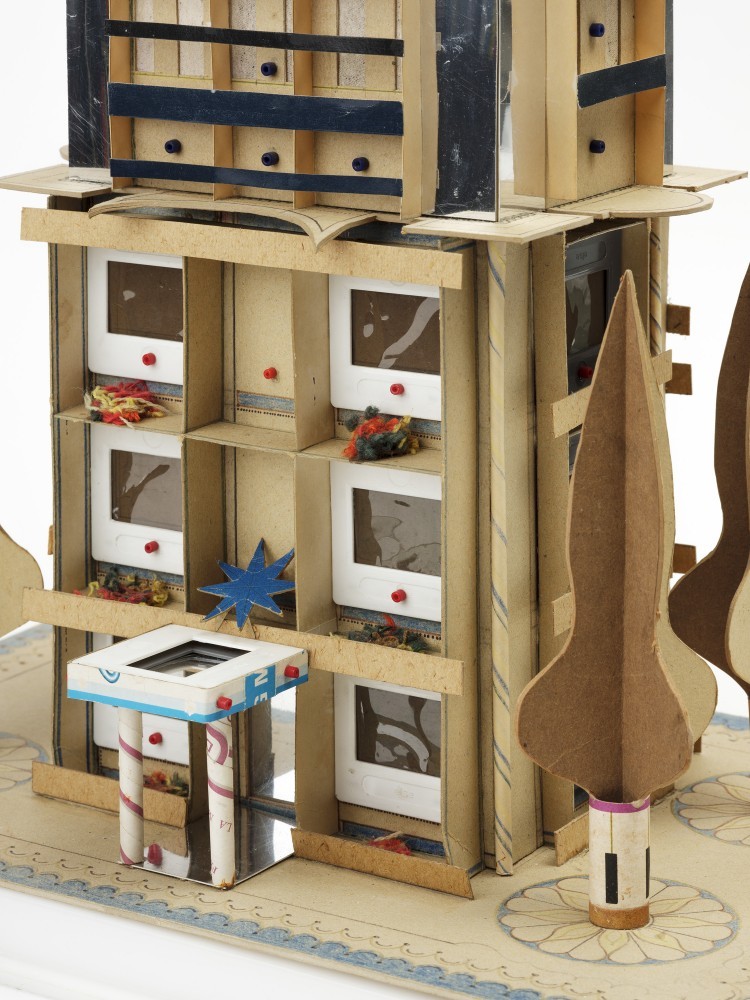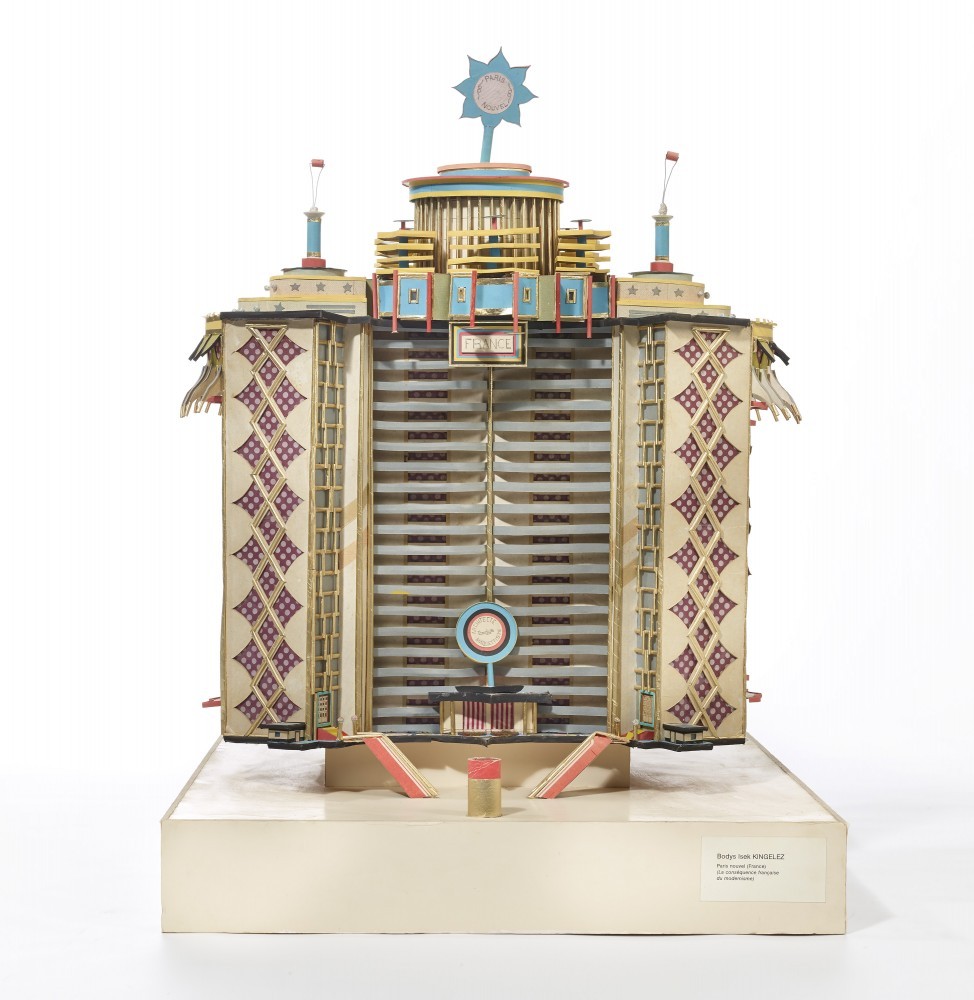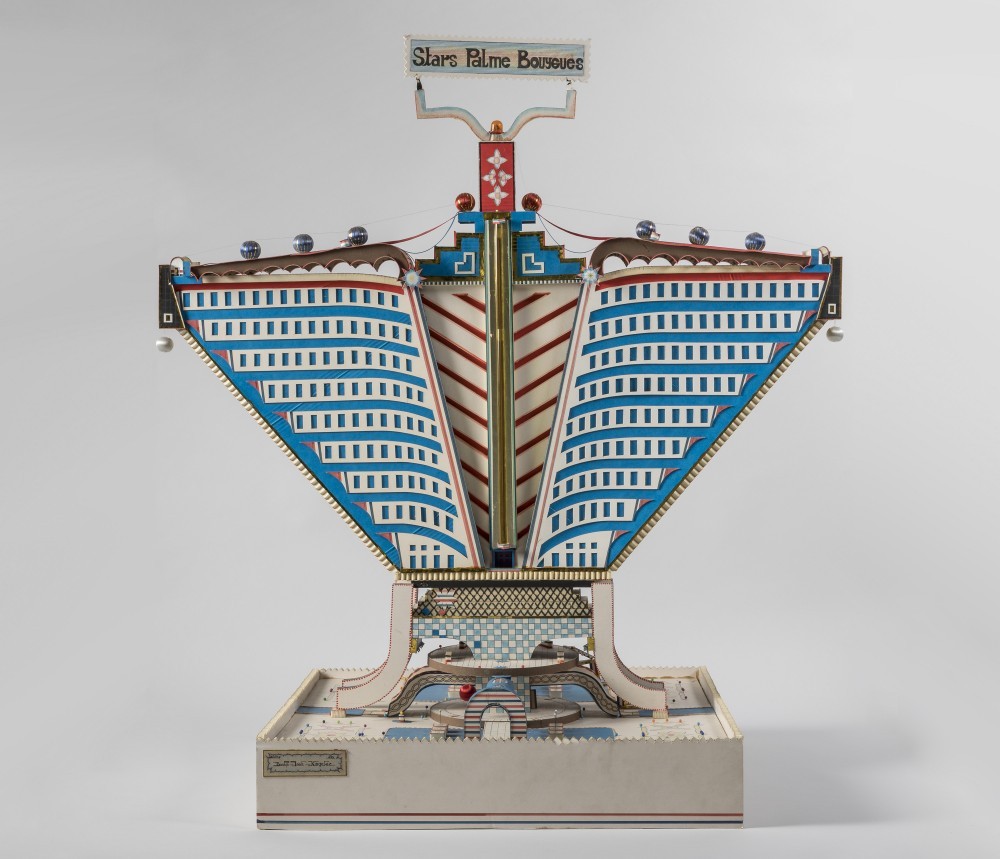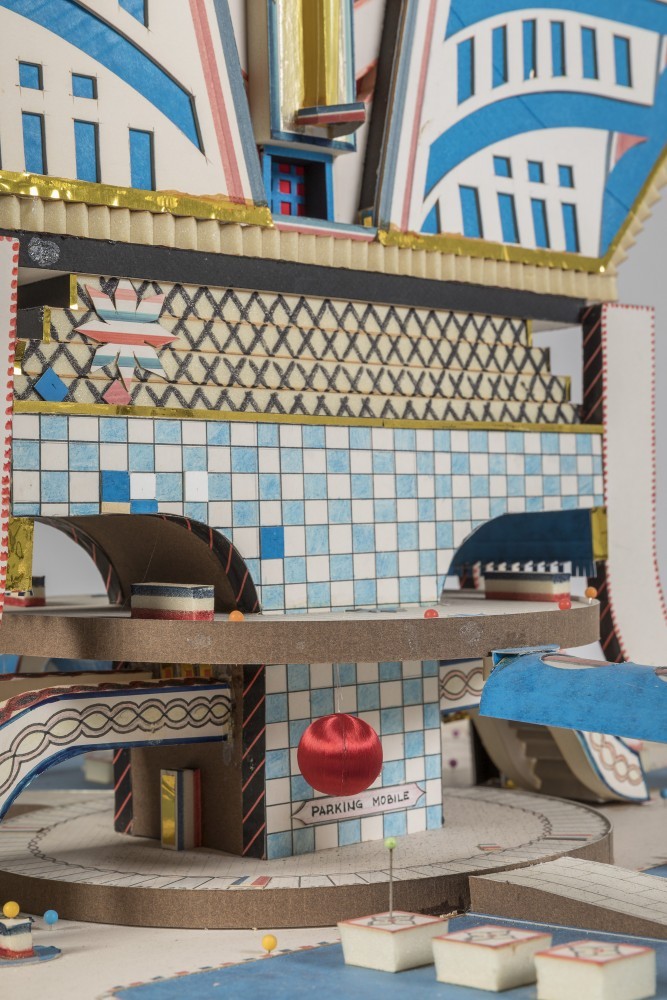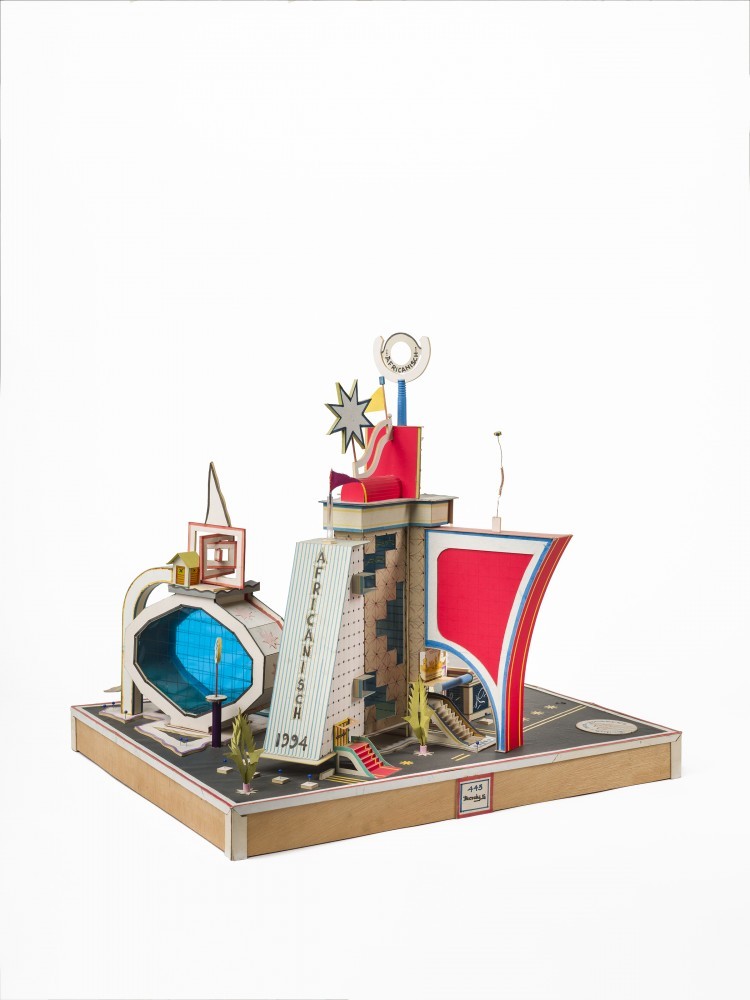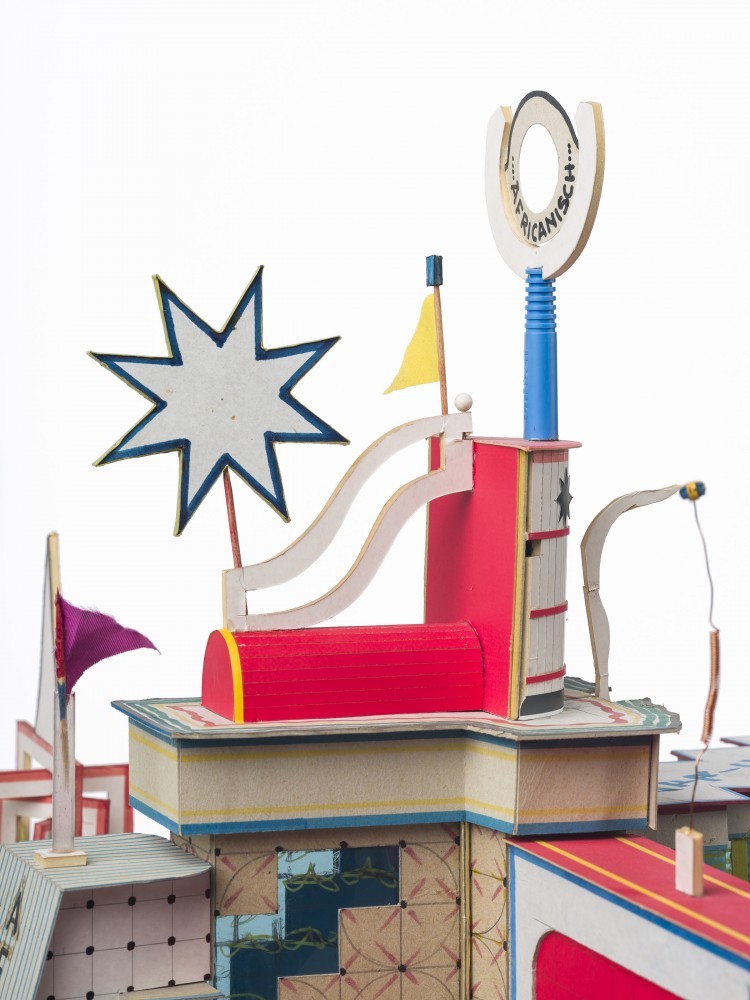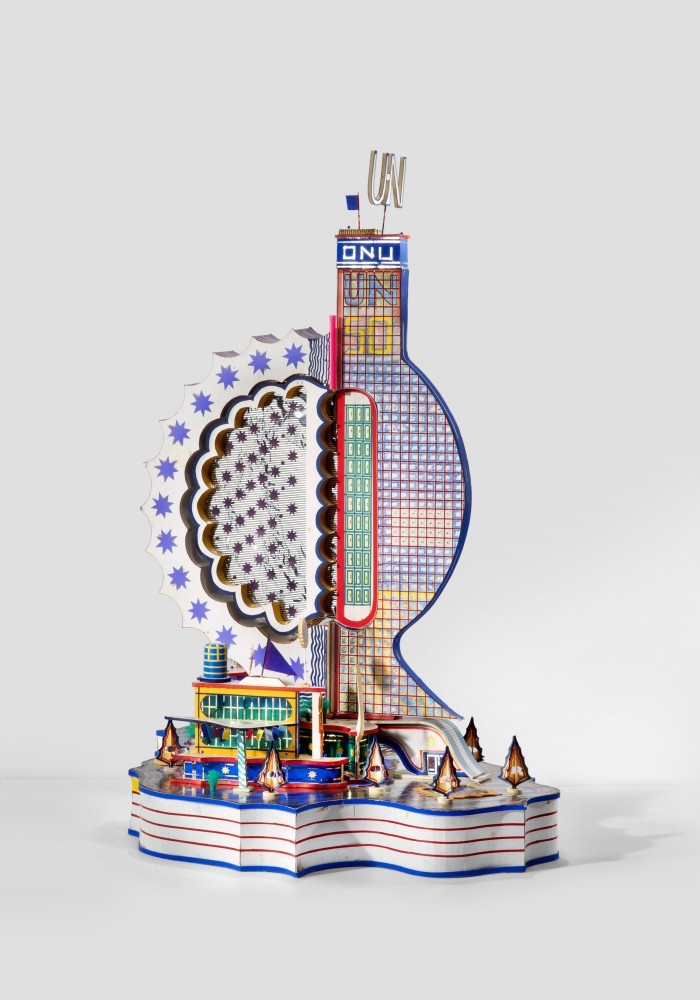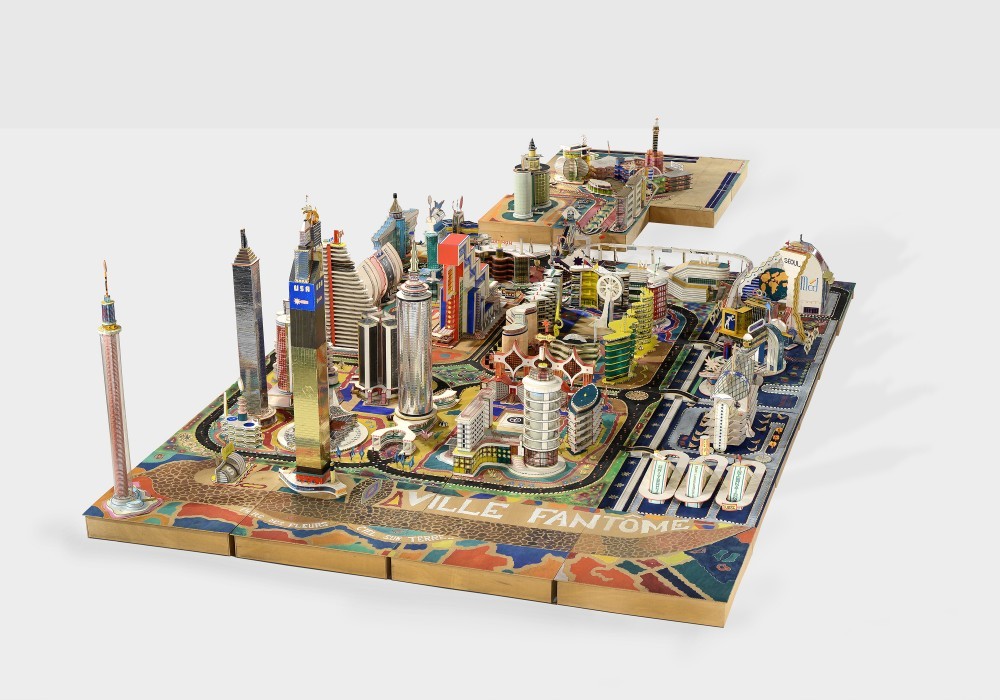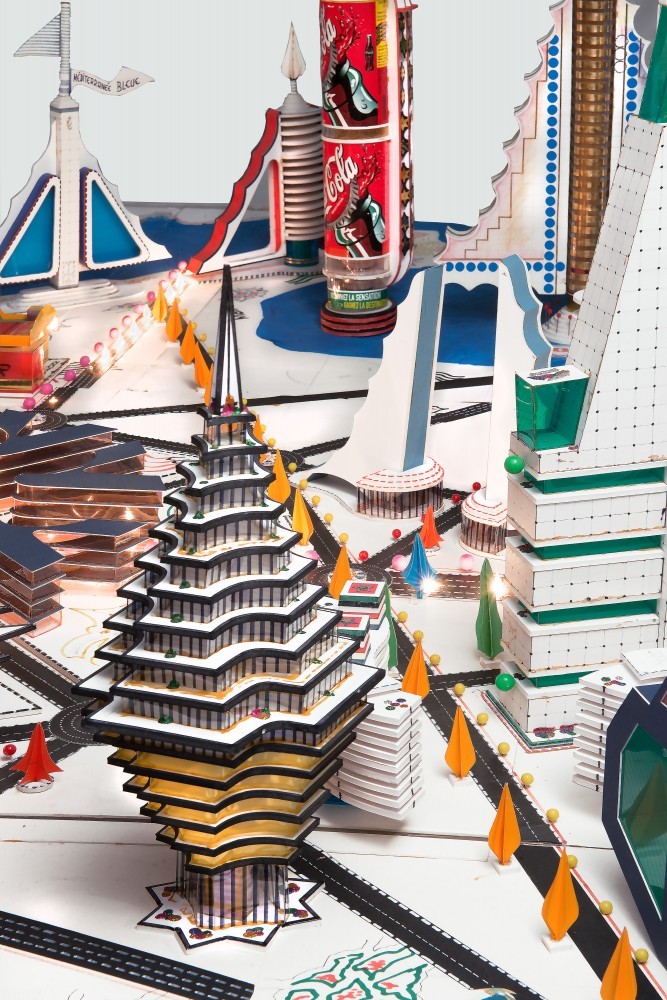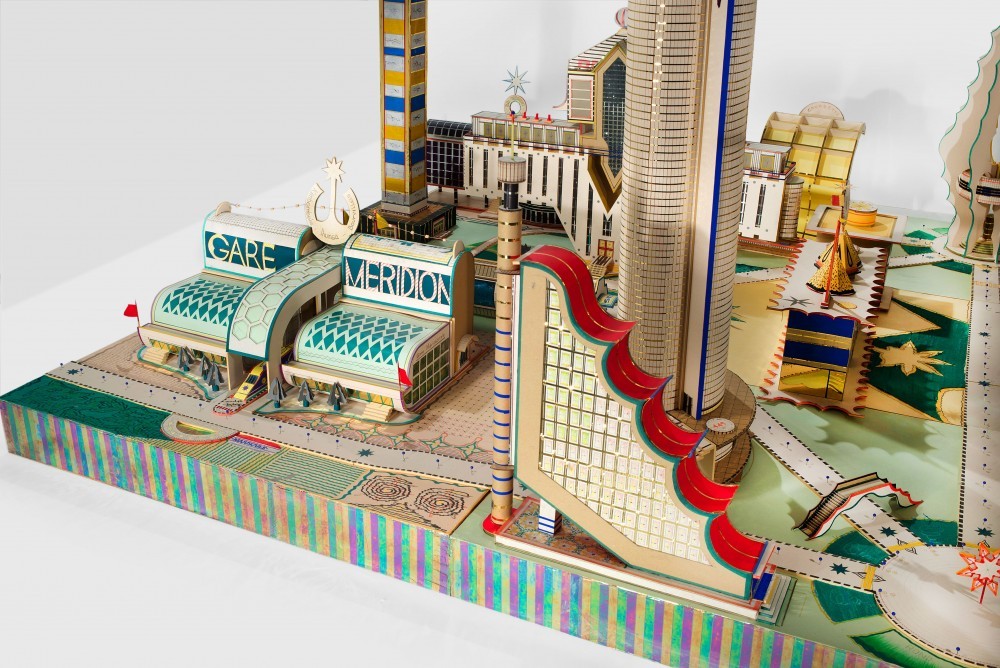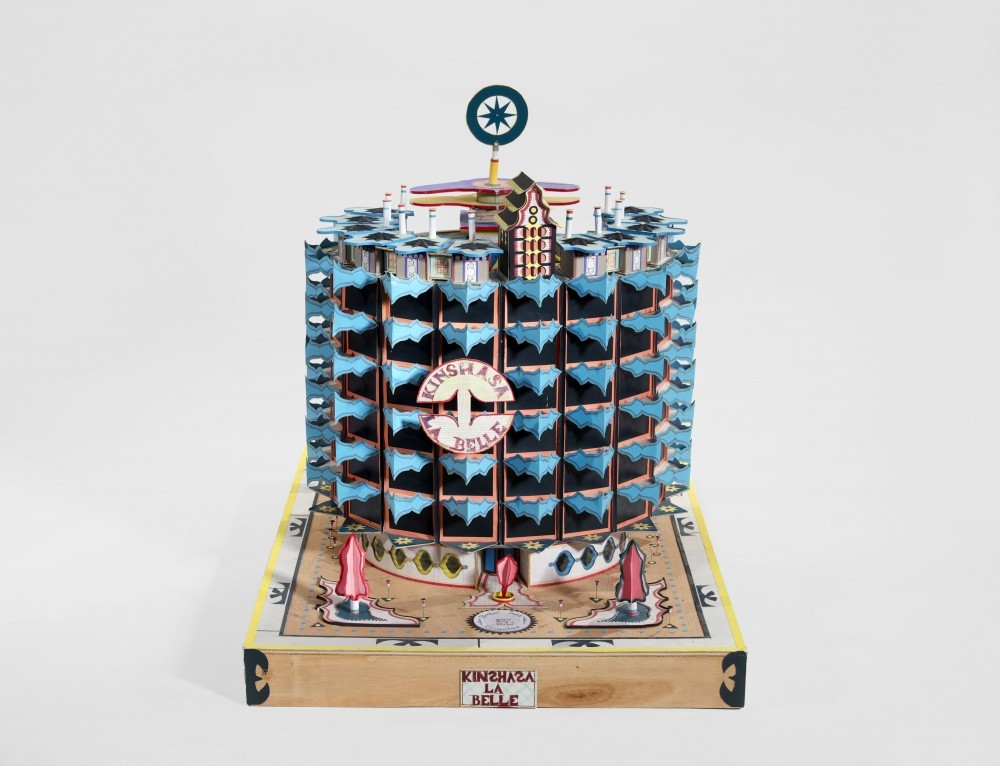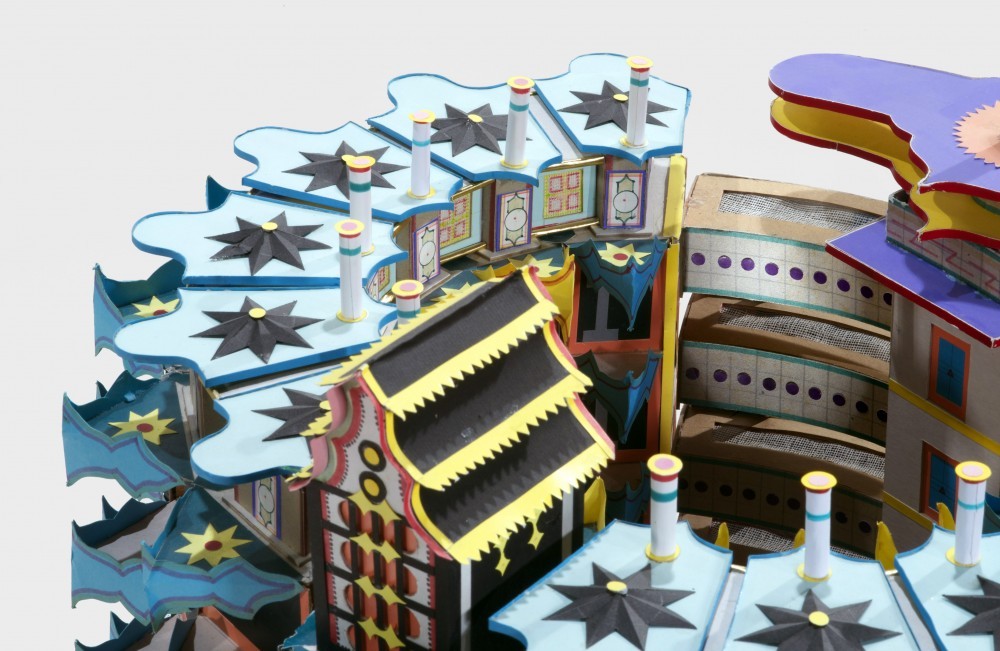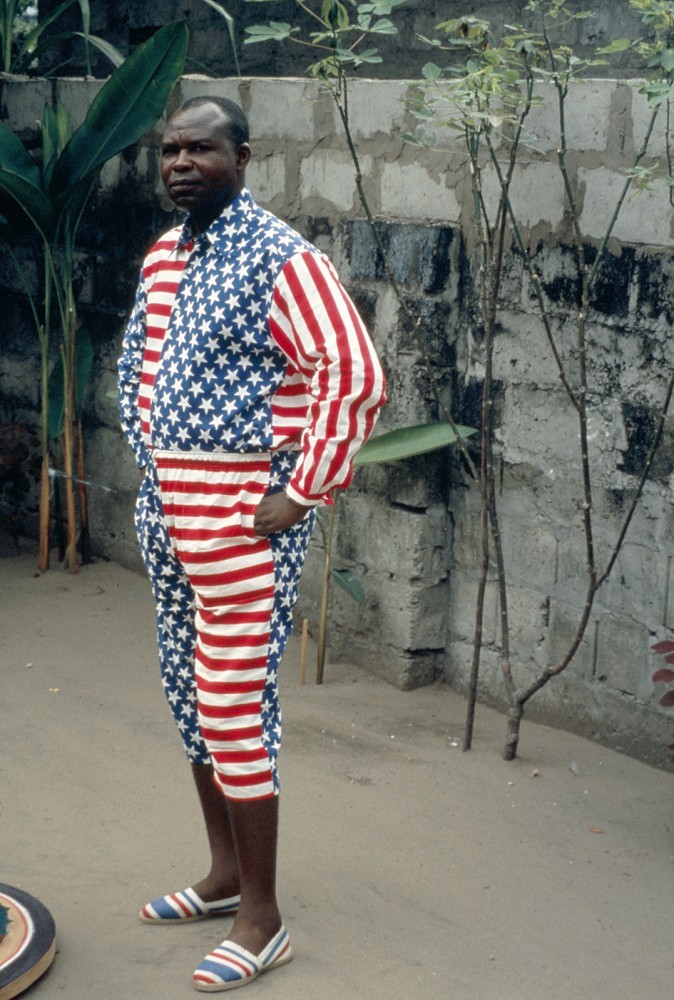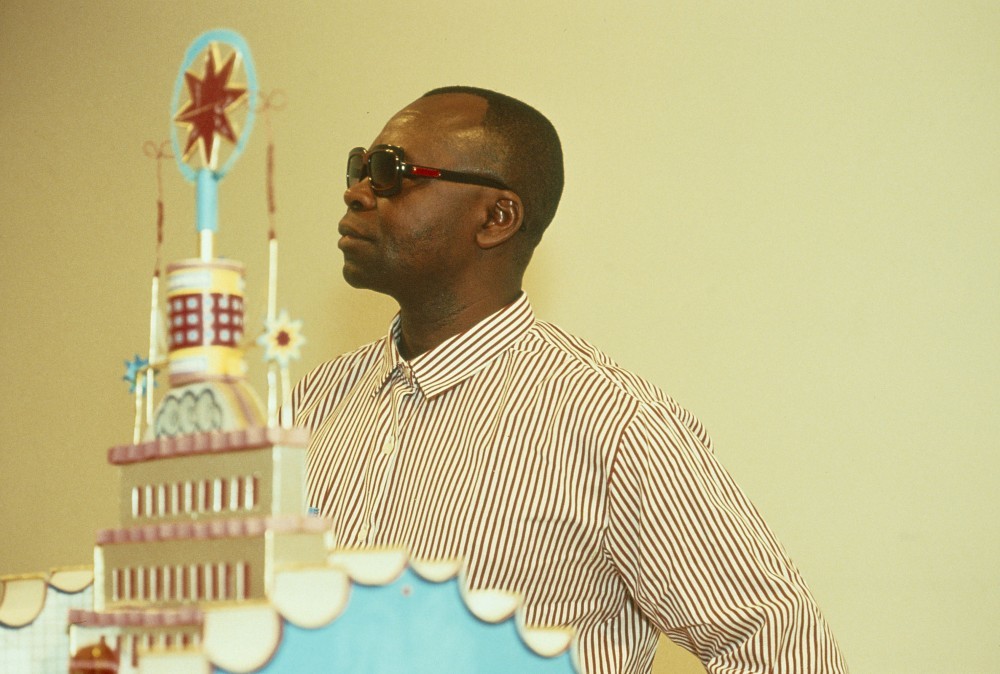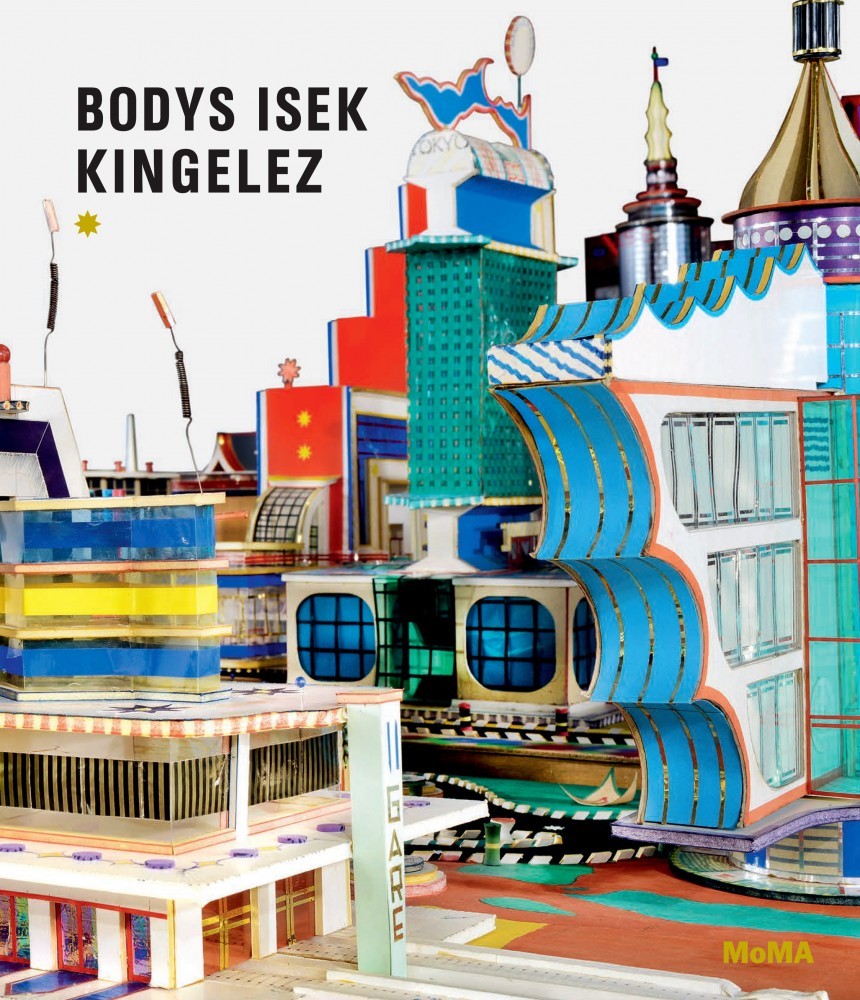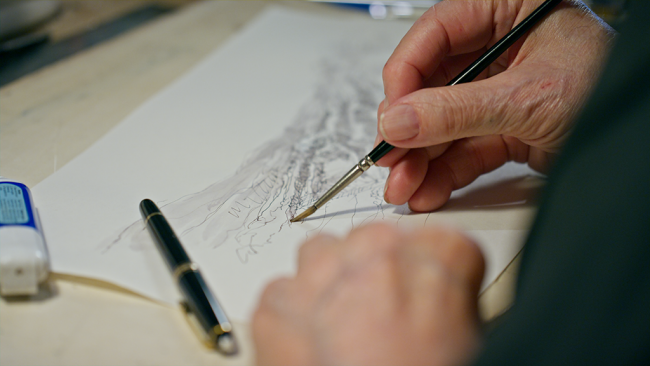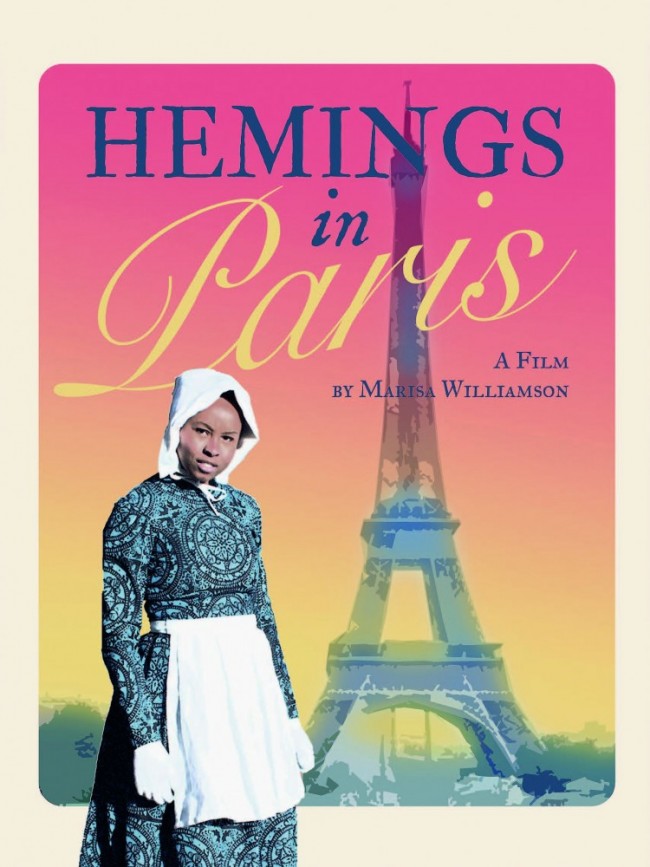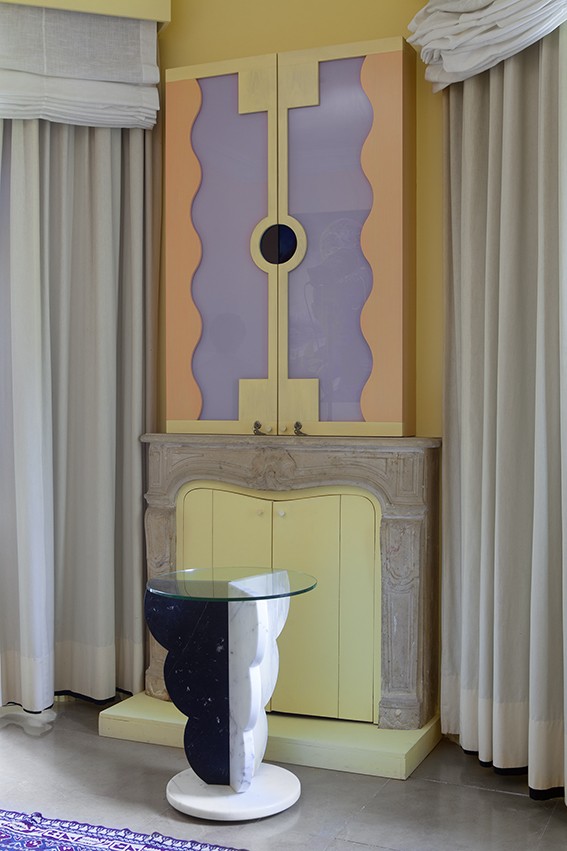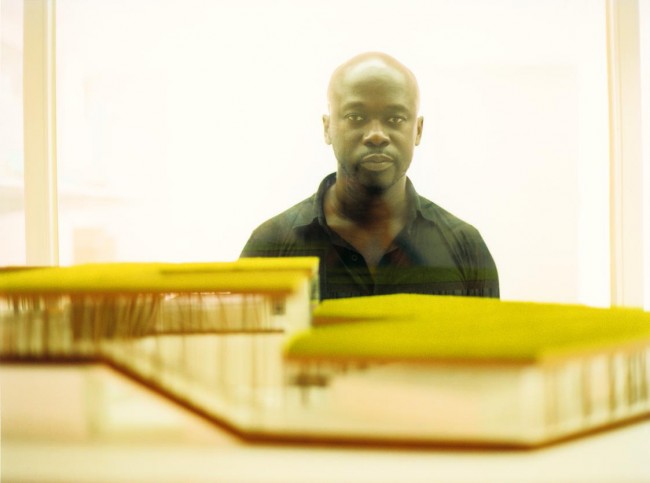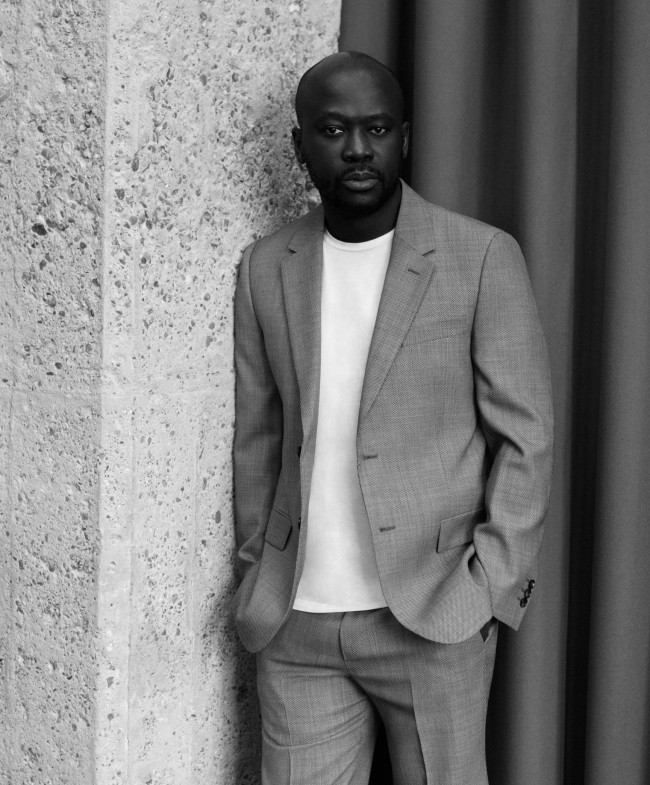BOOK CLUB: The Notional Architectures of Bodys Isek Kingelez
What is it about the architectural model? Maybe it has something to do with the whimsy of building sand castles and the mysterious joy of unfolding a tiny Bazooka Joe comic from the inside of his eponymous, electric-pink bubblegum wrapper. At its best the architectural model can channel these small pleasures, as surely as it defines the life’s work of Congolese artist Bodys Isek Kingelez (1948–2015). A new MoMA monograph, edited by curator Sarah Suzuki with assistance from Rebecca Roberts, is an equally appetizing bit of eye candy, delivering the museum’s recent retrospective — Bodys Isek Kingelez: City Dreams — in a neat, visually pleasing volume.
-

Bodys Isek Kingelez, Ville de Sète 3009 (2000); Paper, paperboard, plastic, and other various materials. Image courtesy The Museum of Modern Art.
-

Bodys Isek Kingelez, Kimbembele Ihunga (1994); Paper, paperboard, plastic, and other various materials. Image courtesy The Museum of Modern Art.
-

Detail view of: Bodys Isek Kingelez, Kimbembele Ihunga (1994); Paper, paperboard, plastic, and other various materials. Image courtesy The Museum of Modern Art.
-

Bodys Isek Kingelez, Ville Fantôme (1996); Paper, paperboard, plastic, and other various materials. Image courtesy The Museum of Modern Art.
-

Detail view of: Bodys Isek Kingelez, U.N. (1995); Paper, paperboard, and other various materials. Image courtesy The Museum of Modern Art.
A self-styled “prophet of African Art,” Kingelez was anything but life-size. He claimed to have crafted 3,014 works or what he dubbed extrêmes maquettes (“extreme models”), scaled-down but always pimped-up notional architectures that tend to embody the architecture of brand and identity, such as world’s-fair pavilions or corporate and institutional headquarters. In her catalogue essay, Suzuki helps frame the nature of Kingelez’s particular kind of mental alchemy, explaining how his work fuses real and imaginary landscapes. Although, in the beginning especially, his means were basic — craft and letter paper, cardboard, repurposed packaging — his paper chimeras became ever more sculptural and kaleidoscopic, forming in some pieces swaths of dazzling cities. Building with ephemera, Kingelez nevertheless created for the ages, tagging his models with handwritten inscriptions, doodles, badges, and labels as if they were pharaonic tablets. He would compose written descriptions of his works in a voice that sounds very much like the narrator of Italo Calvino’s Invisible Cities, a heady mix of fable, royal decree, and urban policy (you can get a very brief glimpse of Kingelez’s fascinating writing translated from the French in the catalogue).
-

Bodys Isek Kingelez, Sports Internationaux (1997); Paper, plastic, and other various materials. Image courtesy The Museum of Modern Art.
-

Bodys Isek Kingelez, Nippon Tower (2005); Paper, paperboard, plastic, and other various materials. Image courtesy The Museum of Modern Art.
-
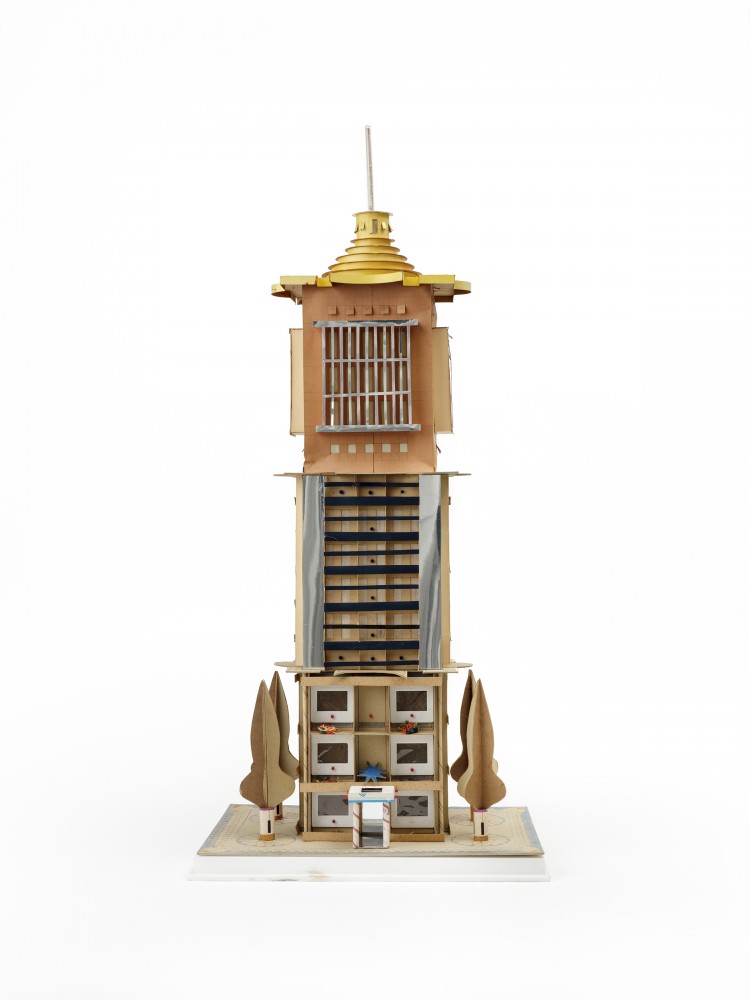
Bodys Isek Kingelez, Untitled (c. 1980); Paper, paperboard, and other various materials. Image courtesy The Museum of Modern Art.
-

Detail of: Bodys Isek Kingelez, Untitled (c. 1980); Paper, paperboard, and other various materials. Image courtesy The Museum of Modern Art.
-

Bodys Isek Kingelez, U.N. (1995); Paper, paperboard, and other various materials. Image courtesy The Museum of Modern Art.
An array of international, group, and solo exhibitions have celebrated Kingelez over the years, and references to him pop up in literature on development and city planning in Africa, yet publications dedicated to his work are limited. MoMA’s recent endeavor seems timely given that the last monograph (Hatje Cantz publisher) is now nearly two decades old. Showcasing 33 works that were produced between 1980 and 2007, the MoMA volume offers the most comprehensive view of the artist’s legacy to date. Key private loans, such as from Jean Pigozzi’s covetable Contemporary African Art Collection in Geneva, as well as from museums like the Groninger, Netherlands, help trace Kingelez’s trajectory from early work completed while he was a restorer at the Institut des musées nationaux in Kinshasa (he got the job thanks to the skill of his models) to major commissions created for residencies far from his Congolese home base.
-
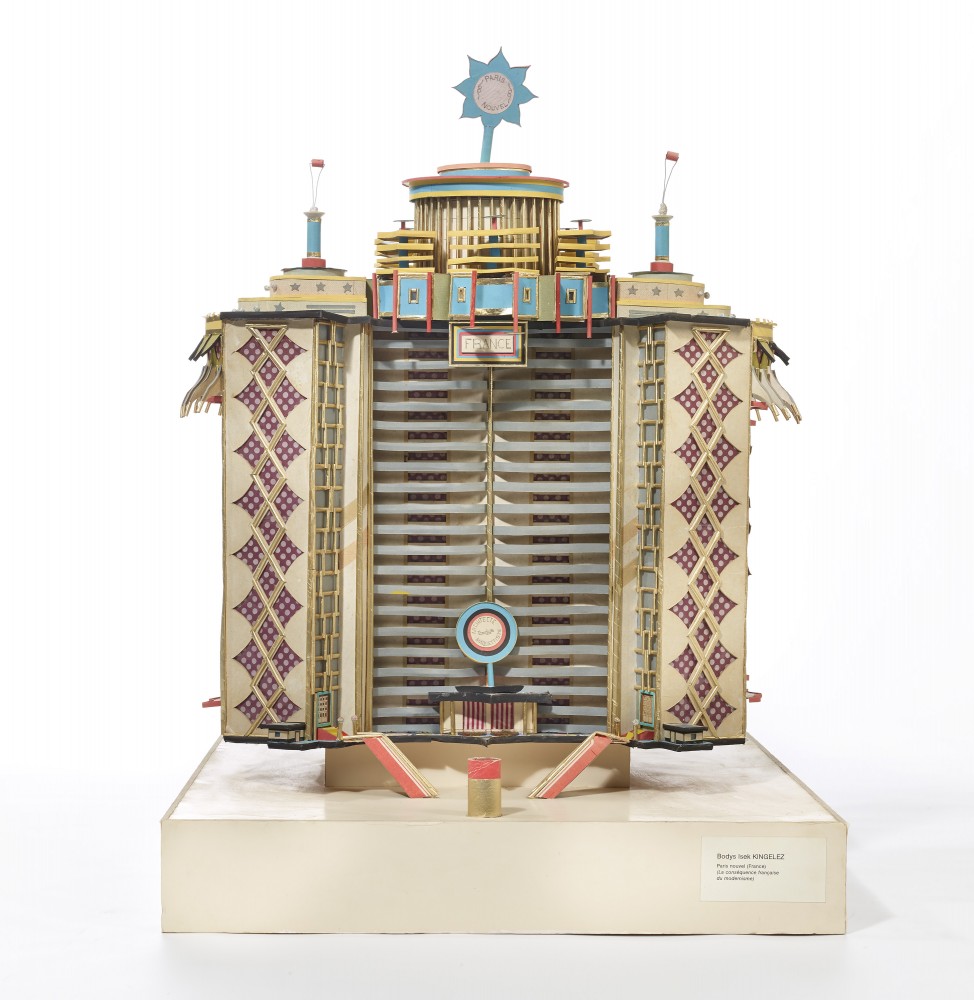
Bodys Isek Kingelez, Paris Nouvel (1989); Paper, paperboard, and other various materials. Image courtesy The Museum of Modern Art.
-
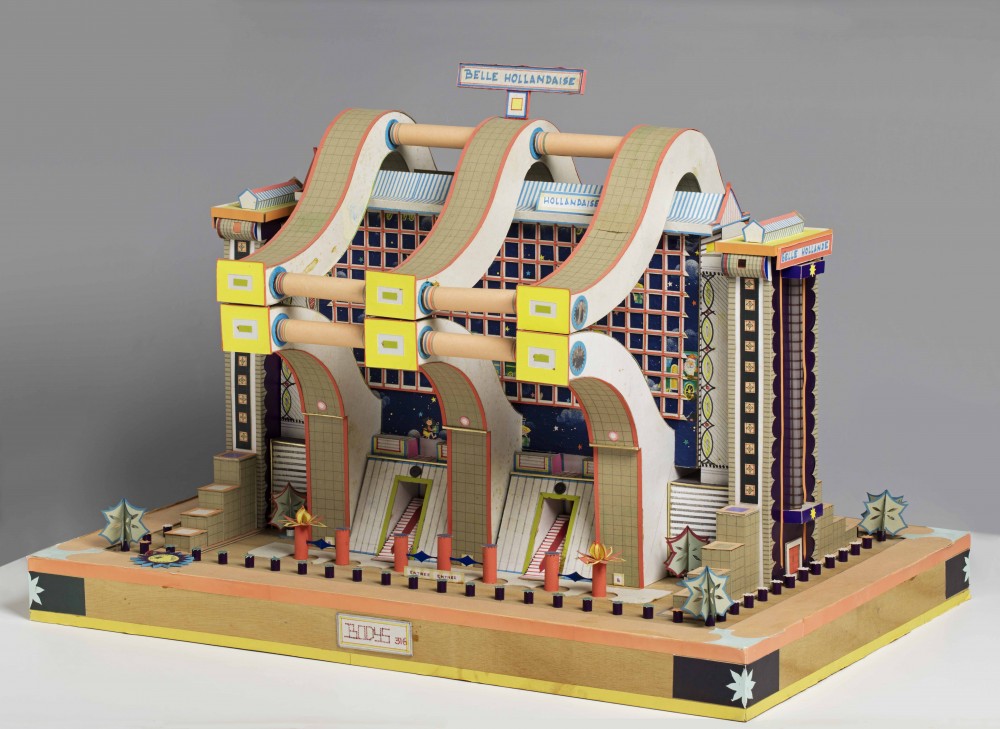
Bodys Isek Kingelez, Belle Hollandaise (1991); Paper, paperboard, and other various materials. Image courtesy The Museum of Modern Art.
-

Detail view of: Bodys Isek Kingelez, Belle Hollandaise (1991); Paper, paperboard, and other various materials. Image courtesy The Museum of Modern Art.
-
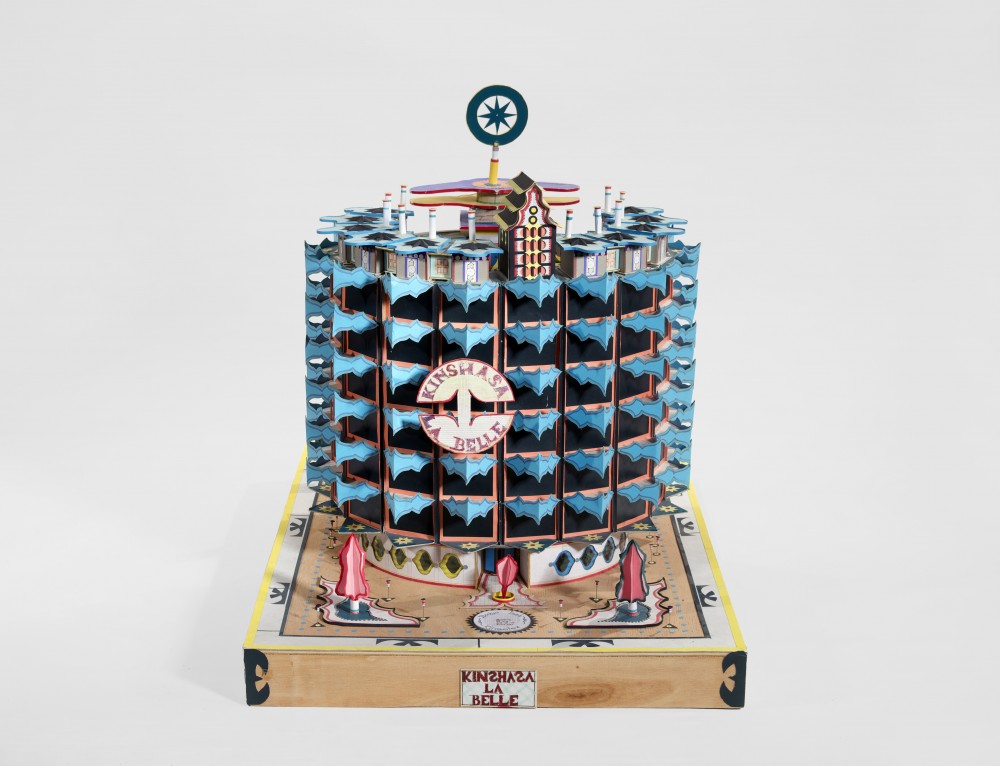
Bodys Isek Kingelez, Kinshasa la Belle (1991); Paper, paperboard, and other various materials. Image courtesy The Museum of Modern Art.
-

Detail view of: Bodys Isek Kingelez, Kinshasa la Belle (1991); Paper, paperboard, and other various materials. Image courtesy The Museum of Modern Art.
Given that photographic documentation of Kingelez’s work is incomplete and stylistically uneven, one of the catalogue’s most valuable offerings is new, consistent images. Graphic designer Naomi Mizusaki’s riff on the traditional catalogue raisonné allows the photographic plates to function at their strongest and at the same time scatters cues to Kingelez’s visual vernacular and architectural graphics throughout. Like the exhibition it parallels, however, the catalogue quietly asks whether the artist’s mixed-media marvels are architecture at all. In his short contribution, David Adjaye argues that Kingelez had much more in common with psychogeography (think mapping how you dream about a place) or even film (think montage), while Princeton professor Chika Okeke-Agulu brings Kingelez in line with postcolonial critique, showing us how to read the wry commentary playing behind the swags, scallops, and trims. It is very tempting to agree with him that Kingelez practiced a form of symbolic resistance in the manner of Kinshasa’s street-fashion vigilantes known as les sapeurs. All in all, the catalogue is nice primer on an artist who “stomped all over the landscape of modern architecture,” as Okeke-Agulu has it, yet whose true measure both in architecture and art has yet to be well defined.
Text by Pierre Alexandre de Looz.
Originally published in PIN–UP 25 Fall Winter 2018/19 issue.

